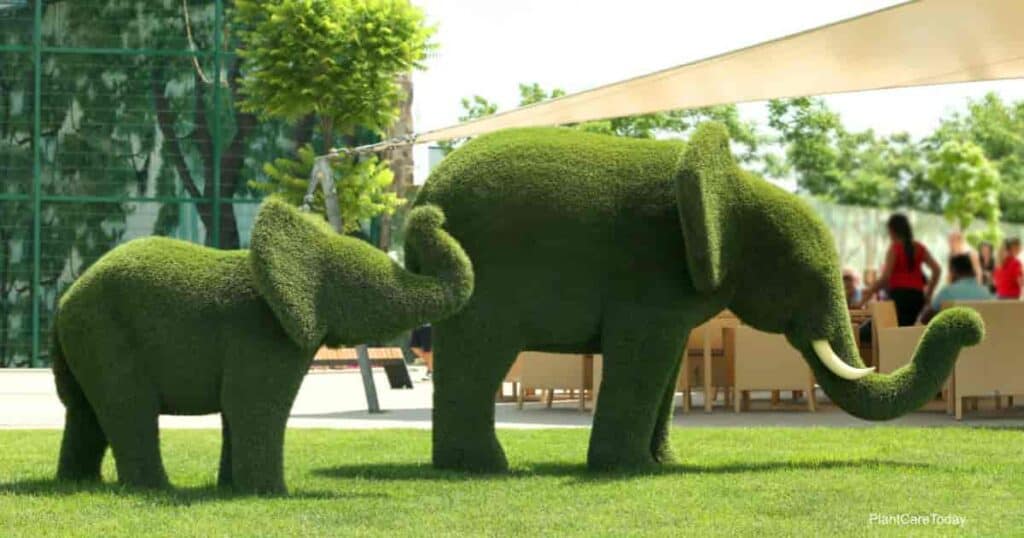Trees are not only majestic and beautiful, but they also provide numerous benefits to the environment and our well-being. However, like all living things, trees require care and maintenance to thrive. One essential aspect of tree care is pruning. Pruning is an art form that involves selectively removing branches or parts of a tree to improve its shape, health, and overall appearance. When done correctly, tree pruning can transform your ordinary backyard into a stunning landscape adorned with sculpted trees that enhance the aesthetic appeal of your surroundings while promoting their longevity. In this article, we will explore the various services offered by Tree Wurk and delve into why proper tree care is essential for both aesthetics and environmental preservation and we will explore the art of tree pruning and provide you with expert tips on how to sculpt your trees for maximum beauty and vitality.
The importance of tree pruning for healthy growth.
Tree pruning is an essential aspect of maintaining healthy growth in trees. By selectively removing specific branches, tree pruning helps to improve the overall structure and appearance of the tree. It allows for better air circulation and sunlight penetration through the canopy, which promotes photosynthesis and reduces the risk of diseases caused by poor air circulation. Moreover, pruning helps in controlling the size and shape of the tree, preventing it from becoming overgrown or imbalanced.
Another significant benefit of tree pruning is that it allows for early detection and removal of dead, diseased, or damaged branches. These branches pose a risk not only to the health and vitality of the tree but also to nearby structures or people. By regularly inspecting trees during pruning sessions, arborists can identify any potential hazards promptly and take appropriate action. This proactive approach ensures that trees remain safe while promoting their longevity.
Understanding the basics of tree anatomy.
Understanding the basics of tree anatomy is essential for anyone looking to master the art of tree pruning and sculpting. One key aspect is understanding the tree’s structure, which consists of several main parts. The trunk serves as the central support system for the entire tree, anchoring it to the ground and providing stability. Branches extend from the trunk, branching out further into smaller branches and twigs. These branches are responsible for carrying nutrients and water throughout the tree.
Another important element is understanding how trees grow and develop over time. Trees have a remarkable ability to adapt and respond to their environment, constantly growing in height and girth. The growth rings visible in a cross-section of a tree trunk indicate its age and provide valuable information about its history.
Choosing the right tools for tree pruning.
Choosing the right tools for tree pruning is essential to ensure the job is done correctly and efficiently. One of the most important tools for pruning trees is a pair of sharp, high-quality hand pruners. These are ideal for removing small branches and twigs with precision. For larger branches, a pruning saw or lopper may be necessary. A pruning saw has a curved blade that can easily cut through thicker branches, while a lopper has long handles that provide leverage for cutting through larger limbs.
In addition to hand pruners, saws, and loppers, it is also important to have a pole pruner or hedge shears on hand for reaching higher branches or shaping hedges. Pole pruners consist of a long pole with a cutting mechanism at the end, allowing you to trim branches without having to climb up into the tree. Hedge shears are useful for maintaining hedges and shaping them into desired forms.
Timing and frequency of tree pruning.
Timing and frequency of tree pruning is a critical aspect of maintaining healthy and aesthetically pleasing trees. One important factor to consider is the type of tree being pruned. Some species, such as oak or walnut trees, are best pruned during the dormant season in late winter or early spring to minimize the risk of disease transmission. On the other hand, flowering trees like cherry or dogwood should be pruned immediately after they bloom to avoid cutting off future flower buds.
Another consideration when it comes to timing is the age and size of the tree. Younger trees require more frequent pruning to establish a strong structure and remove any potential defects early on. As they mature, pruning can become less frequent, focusing mainly on removing dead or diseased branches and maintaining an open canopy for proper air circulation and light penetration.
Conclusion: The transformative power of tree pruning.
In conclusion, tree pruning is not just a necessary maintenance task, but it can also be seen as an art form that allows you to sculpt and shape your trees to enhance their overall beauty and health. By following the proper techniques and guidelines, you can create stunning visual effects, promote better growth patterns, and maintain the structural integrity of your trees. Whether you need tree removal, pruning, stump grinding, or emergency storm damage cleanup, Marietta tree services have got you covered with their expertise and commitment to customer satisfaction.Remember to always start with a clear plan, use the right tools, and consult with a professional if needed. So go ahead, grab your pruning shears and unleash your creativity on those overgrown branches – your trees will thank you for it!

